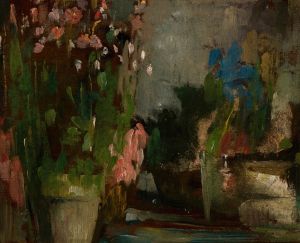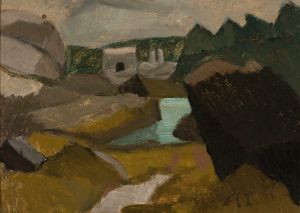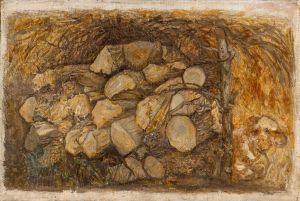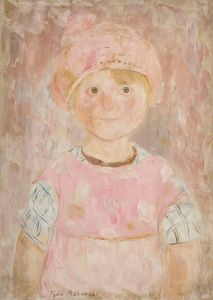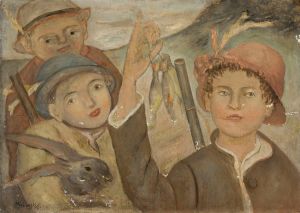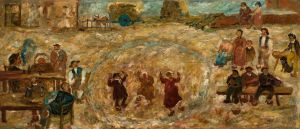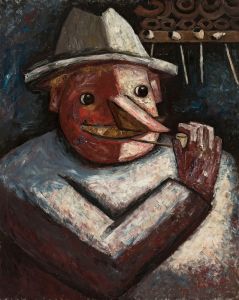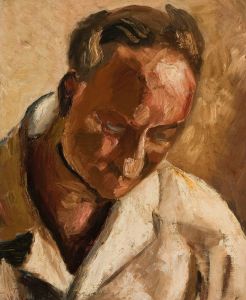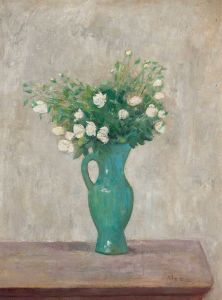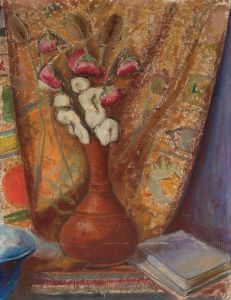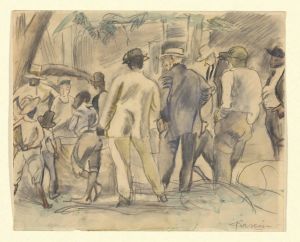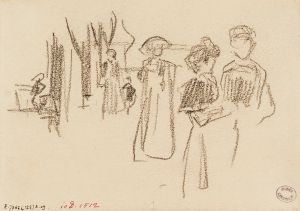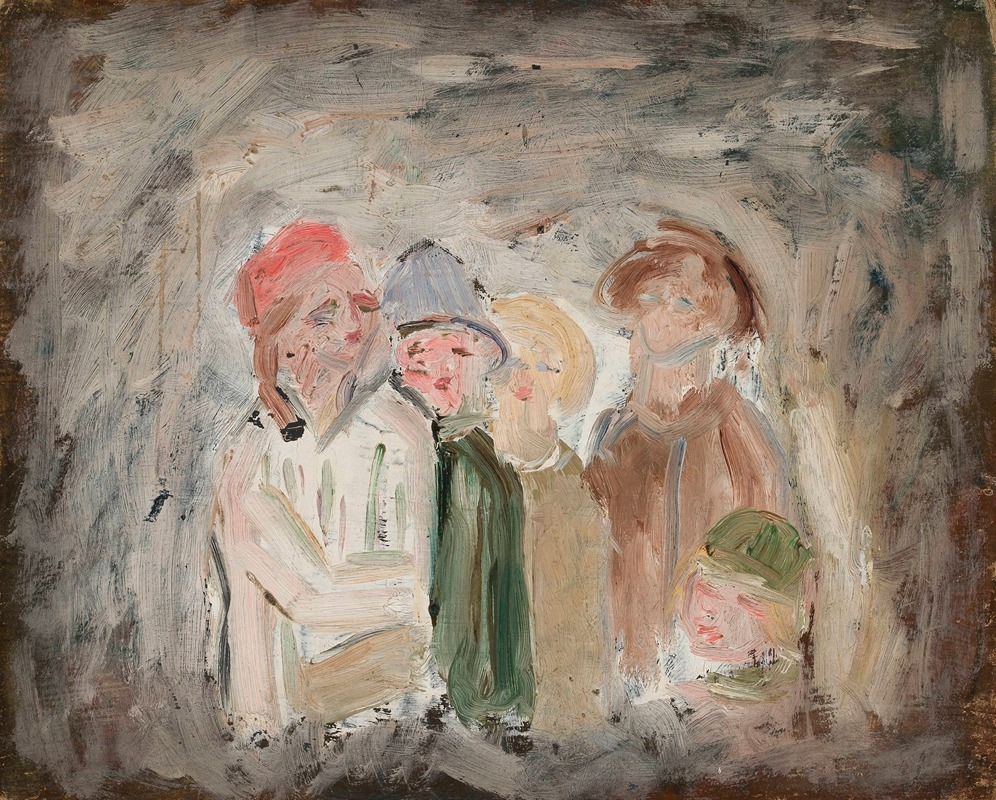
Five children
A hand-painted replica of Tadeusz Makowski’s masterpiece Five children, meticulously crafted by professional artists to capture the true essence of the original. Each piece is created with museum-quality canvas and rare mineral pigments, carefully painted by experienced artists with delicate brushstrokes and rich, layered colors to perfectly recreate the texture of the original artwork. Unlike machine-printed reproductions, this hand-painted version brings the painting to life, infused with the artist’s emotions and skill in every stroke. Whether for personal collection or home decoration, it instantly elevates the artistic atmosphere of any space.
Tadeusz Makowski was a Polish painter known for his unique style that combined elements of folk art, symbolism, and modernism. His work often depicted scenes of everyday life, characterized by a sense of innocence and simplicity. One of his notable works is "Five Children," which exemplifies his distinctive approach to art.
"Five Children" is a painting that captures the essence of childhood through Makowski's eyes. The painting is known for its portrayal of children in a manner that reflects both realism and a touch of the fantastical. Makowski's style often involved the use of muted colors and simplified forms, which can be seen in this work. The children in the painting are depicted with a sense of whimsy and innocence, a common theme in Makowski's oeuvre.
Makowski's background and experiences significantly influenced his artistic style. Born in 1882 in Oświęcim, Poland, he initially studied classical philology before turning to art. He attended the Academy of Fine Arts in Kraków, where he was influenced by the Young Poland movement, which sought to break away from traditional forms and embrace more modern, expressive techniques. His move to Paris in 1908 exposed him to the avant-garde movements of the time, including Cubism, which left a lasting impact on his work.
In "Five Children," Makowski's use of form and color reflects his exposure to these modernist influences while maintaining a connection to his Polish roots. The painting's composition is simple yet evocative, with the children arranged in a manner that suggests both unity and individuality. Each child is distinct, yet they collectively convey a sense of harmony and playfulness.
Makowski's work often included elements of Polish folk art, which is evident in the stylized features of the children and the subtle decorative elements within the painting. This blend of modernist techniques and traditional motifs is a hallmark of Makowski's style, setting his work apart from his contemporaries.
Throughout his career, Makowski remained committed to exploring themes of childhood and innocence. His paintings often evoke a sense of nostalgia, capturing the fleeting moments of joy and wonder that define early life. "Five Children" is a testament to this enduring fascination, showcasing Makowski's ability to convey complex emotions through seemingly simple imagery.
Makowski's contribution to art extends beyond his paintings. He was part of a broader movement of Polish artists who sought to redefine national identity through art, particularly during a time when Poland was regaining its independence. His work reflects a deep connection to his cultural heritage, while also engaging with the broader currents of European modernism.
Today, Tadeusz Makowski is remembered as one of Poland's most significant artists of the early 20th century. His paintings, including "Five Children," continue to be celebrated for their unique blend of simplicity, emotion, and cultural resonance. They offer a window into a world where the innocence of childhood is captured with both sincerity and artistic sophistication.






